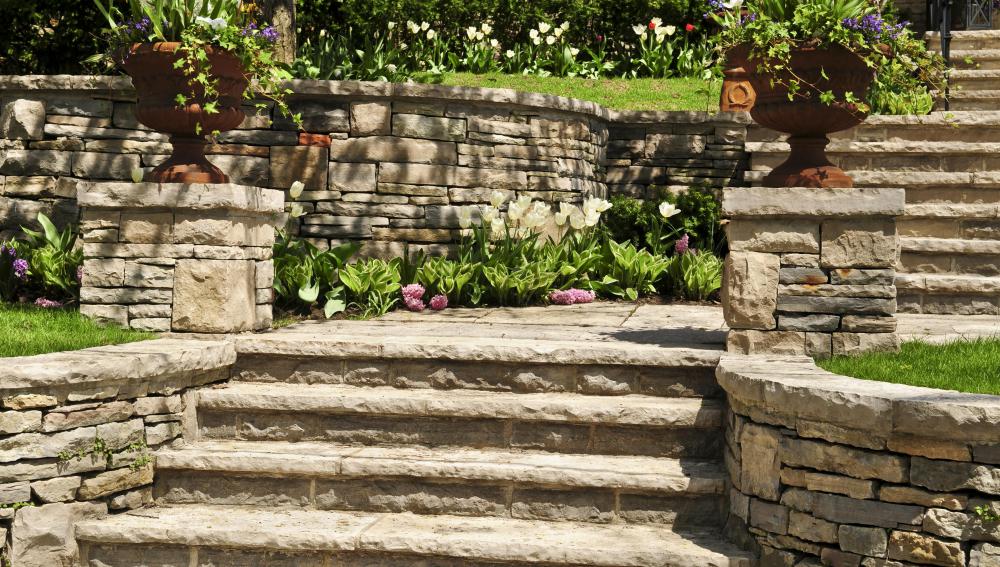At HomeQuestionsAnswered, we're committed to delivering accurate, trustworthy information. Our expert-authored content is rigorously fact-checked and sourced from credible authorities. Discover how we uphold the highest standards in providing you with reliable knowledge.
What are the Different Types of Natural Stone Retaining Walls?
Natural stone retaining walls are often built for aesthetic reasons, but they also function in a practical way by controlling erosion in an outdoor area. There are many types of material choices, such as limestone, granite and sandstone. Retaining walls are usually constructed without the use of mortar, relying on the weight of the stacked stones and friction to hold them in place. Natural stone retaining walls are often designed to separate spaces in a yard, enclose a flowerbed or delineate property borders. The color and size of the stone varies, depending on where the stone was quarried, but most of the stones used are in earthy tones, ranging from dusty white to reddish brown.
If constructed properly, natural stone retaining walls may last one hundred years or more, and there are many walls standing today that were erected well over a century ago. In modern landscape design, this wall system often adds yard levels to an outdoor space, which may create a finished, almost manicured look to a home. Often, these walls are used on land that tends to be sloping to serve dual purposes. For a home that sits on elevated land, adding natural stone retaining walls will lend an almost terraced look as well as serve the practical purpose of curbing erosion.

Many different kinds of quarried rocks are used for natural stone retaining walls, depending on the design of the wall. Granite and limestone tend to be popular stones for retaining walls; granite is a heavier stone, often with a reddish hue, while limestone is lighter in color and weight. Earthy sandstone is also used for retaining walls, and marble is often a popular choice because of its grainy texture and streaked appearance.

The style and shape of a wall usually depends on landscaping needs and the type of property on which the wall is installed. This wall may be built in many different heights, serving as a property barrier or to ensure privacy. It may also be used for more aesthetic reasons, such as lining a driveway, showcasing a flowerbed or functioning as a seat in the shade of a favorite tree.
This kind of retaining wall is not only natural looking, but it also serves the functional purpose of curbing erosion and providing vertical support. Since the natural rocks allow water to freely flow behind the wall and through it, it helps hold the earth in place by relieving water pressure. Natural stone retaining walls are often chosen to offer a sense of permanence and texture to an outdoor area, but they are also usually a practical choice as well.
AS FEATURED ON:
AS FEATURED ON:












Discuss this Article
Post your comments